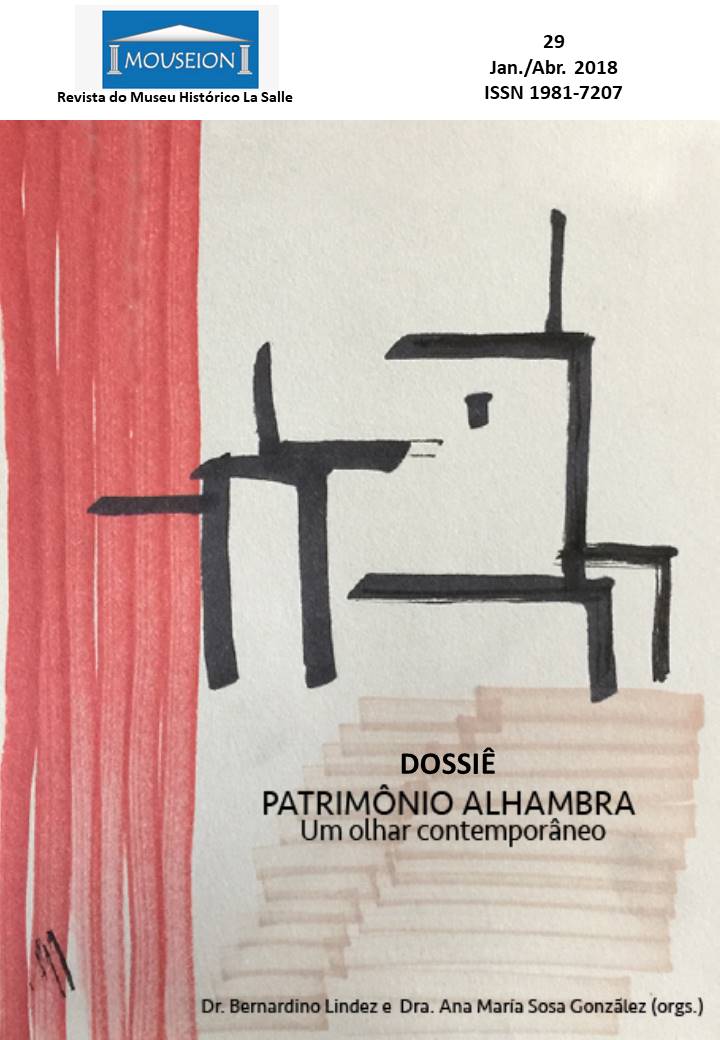Alhambra Heritage: The light, architecture and composition
DOI:
https://doi.org/10.18316/mouseion.v0i29.4705Keywords:
Alhambra, Light, Architecture, CompositionAbstract
In the Nazari Sultanate under the governments of Muhammad III, Ismail, Yusuf I and Muhammad V, culture reached levels of sophistication through architecture, which evidence the deep spirituality of society. Cubic-style structures that draw towers harmonically articulated with canvases of the wall embracing the landscape. Large volumes interspersed with patios, the result of processes of extraction of earth replaced by light and sheets of water“. The final effect is a sensory universe that has light as its protagonist. The light, made matter, acts as the main agent of the architectural space and authentic argument of the project. Shade and light are made for the sensory delight and aesthetic consumption of beauty. The contemporary look “re-builds” the monument and updates its patrimonial value through readings without prejudice that connect past and present. It gives identical quality to each of the stratum that have precipitated that succession of layers that now draw the place and form the Alhambra Heritage.
Downloads
Published
Issue
Section
License
Authors must submit their manuscripts to be published in this journal agree with the following terms:
Authors maintain the copy rights and concede to the journal the right of first publication, with the paper simultaneously licensed under the License Creative Commons attribution that permits the sharing of the paper with recognition of authorship and initial publication in this journal.
Since the articles are presented in this journal of public access, they are of free use, with their own attributions for educational and non-commercial purposes.


